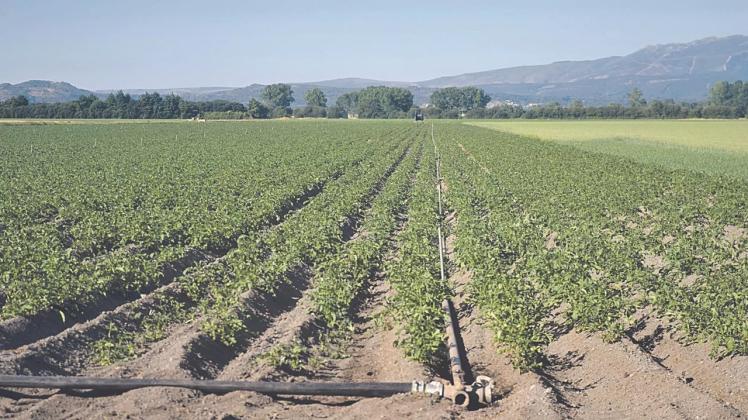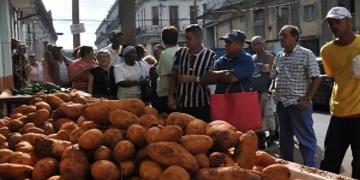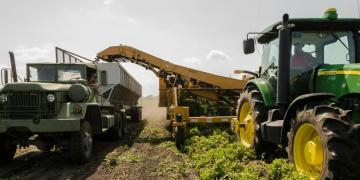Spain (A Limia): Heavy rains complicated the potato campaign
This year’s weather has led to a decrease in cereal and potato production.

A Limia’s harvests have been experiencing several years of difficulties, particularly unseasonal rains that delay spring planting and make harvesting impossible in the fall.
This year, heavy rains particularly delayed planting, so the seeds "were no longer in the best condition," explains José Manuel Gómez, president of the IXP Pataca of Galicia. The president notes that there was a delay of up to two months, as they know that one of the last plantings was on June 16.
“That seed, which was already weaker from having sprouted a lot in the warehouses, produced fewer stalks than in other years,” Gómez continued. “All of these late-planted farms were affected by the intensely hot weeks, and many sprouting shoots were burned.”
These three conditions—late planting, which diminishes seed quality, and intense heat during sprouting—create “the perfect storm,” or so both José Manuel Gómez and Servando Álvarez, technical director of Inorde, agreed.
The prolonged high temperatures particularly affected farms in the Lagoa area, where potato yields are currently irregular, with tubers that already have flowers growing in the same plot and others that are still sprouting. “In the 30 years I’ve been working in Limia, I’ve never seen a situation like this year. There are farms where 10% haven’t sprouted, others 20%, but now we’re seeing almost 70%,” explains Servando Álvarez.
Although it has always been hot in Limia, "there has never been such an intense heat wave 15 days after the planting season," Álvarez noted, emphasizing that the problem now lies in the growth delay, which will force farmers to decide whether to wait to harvest potatoes that are still sprouting or harvest unripe ones.
Victor Cabido, a farmer from A Limia and president of the Hortocabido Cooperative, explained that "those that aren’t fully ripe are the ones that cause problems in warehouses," as they rot much more quickly. "This year is a series of problems that culminate, as always, in the harvest, because we are in the same period as last year or worse," said Victor, expressing concern about the continued climate instability that A Limia is experiencing.
Farms located outside the Lagoa region have seen less of a decrease in yield, as these lands can be worked sooner after the rains, as they dry out more quickly. Many farmers say that this year the difference between a farm with burned shoots and stunted growth and one with good growth prospects lies in a few days’ difference, which would have strengthened the plants.
“If the canals were clean, we could save a few days of planting, which cost us our lives this year,” explains Víctor Cabido. “With this trend, and if we don’t do our best to clean, part of the lagoon will become impassable,” he said, referring to the lagoon’s canals.
According to farmers, the impact varies depending on the farm. On many farms, it is estimated that around 25% of potatoes have suffered growth problems after planting, with the worst cases affecting up to 70%.
The sanitary conditions are excellent
José Manuel Gómez, president of the IXP Pataca de Galicia, points out that despite the decline in production, the weather in recent weeks has been ideal for the development of the tuber.
"The only advantage we have is that in terms of health we are quite well, there have been no significant pests or diseases so far, although late blight can never be ruled out," points out the president, emphasizing that "the harvest may be smaller than in other years, but what I believe is that the potatoes that come out, if the weather continues like this and the diseases respect us, could be a very high quality harvest."
The farms outside the Lagoa are in good condition; many have even had to receive only one treatment, explains Amador Saborido, president of the Nova Limia irrigation community.
Jose Manuel Gómez explained that “fungal diseases proliferate with high humidity and a temperature between 18 and 24 degrees, and we are overcoming those temperatures” and that the main challenge is the “climate we have here, from September the risks are very high with the arrival of heavy rains and cold nights”.
Fuente:




